As I started researching and writing this story, it slowly dawned on me that guitar synth effects fall into two categories: the compact stomp-sized units and what I term the "big beasts"—the rare and desirable monsters that stretch the definition of “effect pedal.” While there are some superb compact pedals, it’s these gargantuan boxes that really set pulses racing with the epic scope of their designs, the wild and unpredictable sounds they create, and their sheer “I want one of those,” GAS-inducing magnificence. So for this story, I donned my pith helmet and stuck to big game.
My fascination for weird old gear stretches back several decades to when we built our first studio in a friend’s tiny basement and could only afford essentials. Scouring ads and garage sales for discarded and unfashionable gear became the habit that would eventually lead me to create my company, Soundgas.
Seeking to replicate otherworldly and elastic electronic noises I’d heard on early-’70s LPs by Stevie Wonder, Pink Floyd, Parliament, and Kraftwerk—and without the benefit of the internet for research—I started chaining together old guitar pedals and running them into the external filter inputs of cheap analog monosynths. My squelchy sonic nirvana came courtesy of a battered Copicat tape echo together with old fuzz, phaser, and wah pedals, and our Korg MS-10 or Yamaha CS-5 synths.
As I considered the definition of a “guitar synth effect” for this article, it struck me that I got pretty close all those years ago. That motley assortment of thrift-store-worthy gear, connected by ragged and scavenged cabling, comprised the essential elements of an analog guitar synth effect.
What’s in a Name?
So, what defines a guitar synthesizer effect? The final word of that question is key. In this article, I’m covering effects that produce synth-like sounds from any electric guitar or bass. Not guitar synthesizers. That’s a whole other ballgame, and not one I can profess any great knowledge of. Guitar synth effects, on the other hand, are one of my particular areas of interest. Those of you who know me through Soundgas or, for that matter, last issue’s story on vintage spring reverbs (“Lords of the Springs”) will already be aware that I’m a sucker for anything exotic when it comes to old gear, and guitar synths are pretty much at the top of the tree. Why? Because to even contemplate building a box that got an unmodified electric guitar to produce sounds like those emitted by a synthesizer, using only ’70s technology, required the mind of a genius or a madman—or a combination of both. An early synth’s notes were either off or on. Creating an effects unit that would respond to the nuances of a guitarist’s playing and track subtle changes in pitch, while still remaining synth-like, required ingenious design.Early guitar synth effects were a shortcut to almost certain financial ruin for manufacturers or buyers. The more sonically successful were complex and extremely expensive—and large. An Electronic Music Studios Synthi Hi-Fli with foot pedals makes a Mu-Tron Bi-Phase seem positively compact. As is often the case with complex, uncommon effects that few understand, when repairs were called for they often suffered at the hands of the misguided or ill-informed, or were cast aside for newer, less cumbersome devices. As technology advanced, these unwieldy behemoths fell out of favor and mostly faded into obscurity. Of the most iconic and desirable big synth pedals of the ’70s, few were made and fewer remain operational.
Okay, back to the parameters of our investigation. Most guitar synth pedals comprise a selection of individual effects—filter, fuzz/distortion, phasing, octave, ring modulation, vibrato, etc.—that are combined to enhance and mutate the original guitar signal into something more synth sounding. Some offer pitch to voltage conversion and can be used to control external synths or modular systems, but for this article I’m going to concentrate on a selection of standalone devices that embody what I consider to be the essential character traits of a successful guitar synth effect.
While I have experience with such effects, I can’t profess a mastery of their history or an encyclopedic knowledge of all the types ever produced. Attempts at historical research weren’t terribly fruitful. Even in the age of the internet there remain areas on the map of vintage guitar effects that bear the inscriptions “this area unexplored” or “here be monsters.” So this article is presented with my apologies for any omissions.
Wish you were there? David Gilmour plugged in this EMS Synthi Hi-Fli to record tracks for Dark Side of the Moon and Pink Floyd: Live in Pompeii. It was photographed among Gilmour’s gear on display in 2017’s Pink Floyd: Their Mortal Remains exhibit at London’s Victoria and Albert Museum.
EMS Synthi Hi-Fli
In my experience, there is one unit that stands above the rest: the EMS Synthi Hi-Fli. This is the ultimate vintage guitar pedal, whether for its features, sound, looks, size, scarcity, price, or simply its star quality. I’ve been fortunate to own four or five over the years, with some overlap between different variations. At one point, I had a rare early prototype and one of the last MkII units. They all sound different, and each one has its own unique character. This is due to the varying degrees by which the 40-year-old components in these complex, discrete circuits have aged. I could have justified keeping them all on the basis that each had unique qualities I enjoyed. But my keeper unit is one of the last produced by EMS.Built starting in 1972, the Hi-Fli was designed a year earlier by David Cockerell, who was also responsible for such legendary synths as the EMS VCS 3, Synthi AKS, and Synthi 100. In ’74, he moved to Electro-Harmonix, where he designed many classic pedals, including the Small Stone, Electric Mistress, 16 Second Digital Delay, and Microsynth. David Gilmour of Pink Floyd is the most renowned early adopter of the Hi-Fli. He began using a prototype onstage in 1972-’73 and in recording Dark Side of the Moon. A Hi-Fli is also visible in the film Pink Floyd: Live in Pompeii. He has two units to this day, though Floyd gear expert and Gilmour tech Phil Taylor maintains that he didn’t use the Hi-Fli extensively. The prototype was displayed at the stunning Pink Floyd: Their Mortal Remains exhibit at London’s Victoria and Albert Museum last year. Around 350 Hi-Flis were made, and other notable users include Steve Hackett of Genesis and Todd Rundgren.
Industrial designer Martin Holbrook’s iconic look for the Hi-Fli was a futuristic, curvaceous cream-colored fiberglass console, typical of late-’60s space-age design—although it was disparagingly referred to as “the toilet seat.” After the first 10 prototypes, which featured twin foot pedals built into the stand that supported it, the design was changed to a separate stand and pedals.
The prototype design, though undoubtedly far more aesthetically pleasing, was less successful ergonomically. Access to the pedals under the sizeable control section was difficult while playing guitar. After EMS ran out of cream fiberglass cases, the final 10 or so units produced were housed in garish orange-painted wooden boxes.
While the early prototypes miss some of the later units’ improvements, and some mid-period Hi-Flis didn’t have the “growl” modification, all examples I’ve played have been utterly captivating. I know of no other effects unit that is as sonically versatile or as compelling and expressive. The Hi-Fli oozes inspiration, but if you find a sound you like, be certain to hit record quickly, because it can be difficult to precisely recreate settings. There are many variable parameters, and the slightest movement of each of nine faders has a significant impact on the sound. So, the Hi-Fli has all the flaws, foibles, and idiosyncrasies you’d expect in an analog synth from the early ’70s. It is one of those rare magical devices that surprises and delights one moment, only to obfuscate and exasperate the next.
Set the Controls for the Heart of the Sun
The Hi-Fli is complex and nuanced. Of course, you can just plug in and move sliders and switches until you get a sound you like. But the Hi-Fli is divided into two main sections by the bypass mixer, which controls the wet/dry mix. On the left are the top boost, octave shift, and sustain fuzz controls, and on the right are the controls for the stunning and multi-featured phase filter section. This is where you select and shape the various phaser, vibrato, and filter settings: vibrato, phasing 1, phasing 2, waw, wawa, and meow—tags that provide a tantalizing glimpse of what’s possible.
Three faces of the EMS Synthi Hi-Fli (from left to right): one of the 10 original prototypes with pedals directly beneath the unit; a final production model after EMS had run out of fiberglass housings, with the “growl” switch in the phase filter section and a bypass switch in the midsection; and a mid-period example without the growl mod. The middle unit is the author’s and can be heard in the sound clips online.
Running along the bottom are the switches to control the left and right foot pedals. Being able to select positive or negative voltage for the various sliders (or leave them off) for each pedal puts a vast array of control options at your disposal. On the top left is the solo/strum switch, which determines the attack/decay time sensitivity. Later units also feature the growl, which uses a subharmonic to modulate the phase filter, yielding even wilder sounds.
If I filled this entire magazine, I’d still fall short of conveying the depth, scale, and sheer craziness of the sounds the Hi-Fli can create. One minute you’re in the amphitheater at Pompeii making seagull noises; the next you’re like an axe-slinging Kraftwerk mannequin. Yet it also excels at gentle and subtle phasing and vibrato. This is a design of staggering quality and ambition with possibilities that stretch far beyond anything else created for use with an unmodified electric guitar in the ’70s. Like a guitar, the Hi-Fli will sound very different depending on who is playing it. Over the years, I’ve created all manner of scrumptious electronic noises using different Hi-Flis, and I still don’t feel I’ve come close to exhausting the sonic possibilities of this wondrous device. But in the neighborhood of $5,000 and up today, Hi-Flis are an investment in more than a learning curve.
The Ludwig Phase II Synthesizer isn’t really a synthesizer, but it is every bit as colorful as it is cumbersome, with its bright, candy-colored controls.
Ludwig Phase II Synthesizer
When I first read Tom Hughes’ superb book, Analog Man’s Guide to Vintage Effects, I was surprised to find the company that made John Bonham’s kit also briefly made a guitar synth pedal. It was manufactured in very small quantities, in around 1970 to ’71, and, like most of the units in this article, isn’t really a synthesizer. It’s a mix of fuzz, tremolo, and formant filtering—all achieved in the pre-chip era using discrete circuits.While the paltry menu of effects offered in the Ludwig Phase II Synthesizer may not immediately seem appetizing, wait until you see one in the flesh. The design is a showstopper, comprising multi-colored backlit panel controls and a flip-up panel lid with a flip-down pedal section. And check out the controls: fuzz mix, animation, and formant trajectories (the latter refined into parallel, counter, and vowel variants).
The Ludwig’s signature “yoy-yoy” sound is very reminiscent of a favorite wah pedal of mine—the early-’60s cast-metal version of the Schaller Bow-Wow Yoy-Yoy—and it’s not impossible to recreate much of what the Phase II can achieve using one of these with a fuzz and a tremolo pedal. While the Phase II scores highly on the rarity and desirability front, and is one of the greatest-looking pieces of gear you’ll ever find, it’s not as versatile as I’d hoped and falls a long distance short of the Hi-Fli.
It should perhaps be viewed as more wah than synth—albeit a wah with great tone-shaping options, with its fuzz and tremolo adding lots of color and vibe. And it can yield wild and expressive results. But if you’re looking for a box that will transform your guitar into something from another planet, I’m not sure the Phase II fits the bill. Users of the Ludwig Phase II include Sonic Youth, Beck, Pearl Jam, and Primus. They sell for between $2,500 and $3,200 today.
Tom Oberheim, of Oberheim analog synthesizer fame, also developed the Universal Synthesizer System USS-1 for Maestro. The USS-1 is really an analog multi-effects unit and excels in a studio setting—especially with old drum machines.
Maestro Universal Synthesizer System USS-1
The name USS-1 conjures images of a sleek spaceship or a majestic aircraft carrier. In the flesh, Maestro’s Universal Synthesizer System USS-1 is hardly less imposing. This is a guitar pedal that could only have come out of ’70s America—a land where everything was bigger, brighter, and bolder.Designed by the great Tom Oberheim for Gibson’s Maestro brand, the USS-1 is really an analog multi-effects unit comprising fuzz (labeled waveform), filter with a sample and hold button, phaser, envelope shaping, and a subharmonic generator. While it appears to be a selection of classic Maestro pedals in a very big case, I’ve found it to be greater than the sum of its parts. The USS-1 makes great sounds with a guitar, but they’re not hugely synth-like. To me, this unit shines as a studio effect—especially when used on old beat-box-style drum machines. The sub-octave generator takes a beat and adds bass notes. It’s highly addictive!
Like many of the devices in this article, the USS-1 proved too big and expensive, and few were produced before Maestro dropped it from the catalog. One thing to bear in mind if you’re considering buying one of these behemoths: The sliders are similar to those in old Arp synths. They have a long plastic shaft and a tendency to become sticky over time (especially if they’ve been sprayed with switch cleaner … or worse), and they snap off easily. Most of the USS-1s we’ve seen have needed painstaking slider restoration to function well. And that’s after an investment of roughly $1,500 or more on the resale market.
If you’re lucky enough to peer inside one of these electronic unicorns, you’ll discover that all the IC chips’ identity markings have been obliterated in an effort to protect the Compu-Sound’s circuit design.
Frogg Compu-Sound
The Frogg is really quite the Prince.Touted by its manufacturer as the first digital effect when it was released, the Frogg Compu-Sound was, in fact, an all-analog filter with envelope control that used IC chips to govern the various patterns and sequences. Sporting a keypad and red LED display, the Compu-Sound was a futuristic device back in 1975, but the high price tag of $500 (equivalent to around $2,300 today—which, by the way, is also roughly the current going rate) meant it was the provenance of well-heeled users, including Frank Zappa, Stevie Wonder, and Brian May. Only about 100 were made. Perhaps it falls short of being a true synthesizer, but the quality of the effects is superb and it’s a delight to play.The Compu-Sound’s main claim to fame? It was used during the recording of Saturday Night Fever. Those distinctive, funky envelope filter and wah sounds feature heavily in the Frogg’s 99 programs. Designed by Doug Talley (who also worked for Foxx), the Compu-Sound delivers an array of effects, including various automatic and manual wah, envelope filter, and notch flanger patterns. It came with a treadle.
Tracking down a Frogg Compu-Sound is not easy, and if you find one, pray it’s still usable. We’ve been working on fixing three machines for over a year now. There are no available schematics and, to protect their design, Frogg erased the identity markings from the IC chips.
We have now been able to recreate the obsolete EPROMs used to store the patterns using one good machine and hope eventually to reverse-engineer the circuit. If anyone reading this has access to schematics, please get in touch, as it pains me to think of such rare and superb-sounding devices being consigned to the scrap heap.
With an austere face and Cyrillic lettering, the ESKO-100 looks every bit the Soviet-era made-in-Russia device. And while they are hard to find, their current prices are more in line with a proletarian budget than other vintage big-beast guitar-synth boxes.
Formanta ESKO-100
Coming from the other side of the Iron Curtain, the ESKO-100 is an über-rare multi-effects-style guitar synth. It’s included here because it looks amazing and sounds completely bonkers. But it’s also very large, heavy, and almost impossible to find. That said, when one does turn up it’s typically cheaper than the other devices we’ve covered so far. The Soviet Guitar Effects Online Store & Museum sold one recently that listed for $399 plus shipping.The ESKO-100 was manufactured to a very high standard, with military-grade components, in the late ’70s or early ’80s. Comprising a 4-head tape delay with a shimmer setting, fuzz, vibrato, and a phaser with identity issues (it thinks it’s a flanger), plus a heavy-duty treadle for manual control, this unit emits sounds like you’re playing guitar inside the rusting ice-covered hulk of an abandoned nuclear sub—in a vortex. Later models abandoned the tape delay for an oh-so-modern BBD delay system.Famous users were probably banished to Siberian salt mines.
Although the author has yet to get his hands on one of these, they are out there—somewhere. The regeneration and delay controls are familiar to vintage analog delay users, but the A and B harmony settings add a new dimension. Photo courtesy of Rafmax.




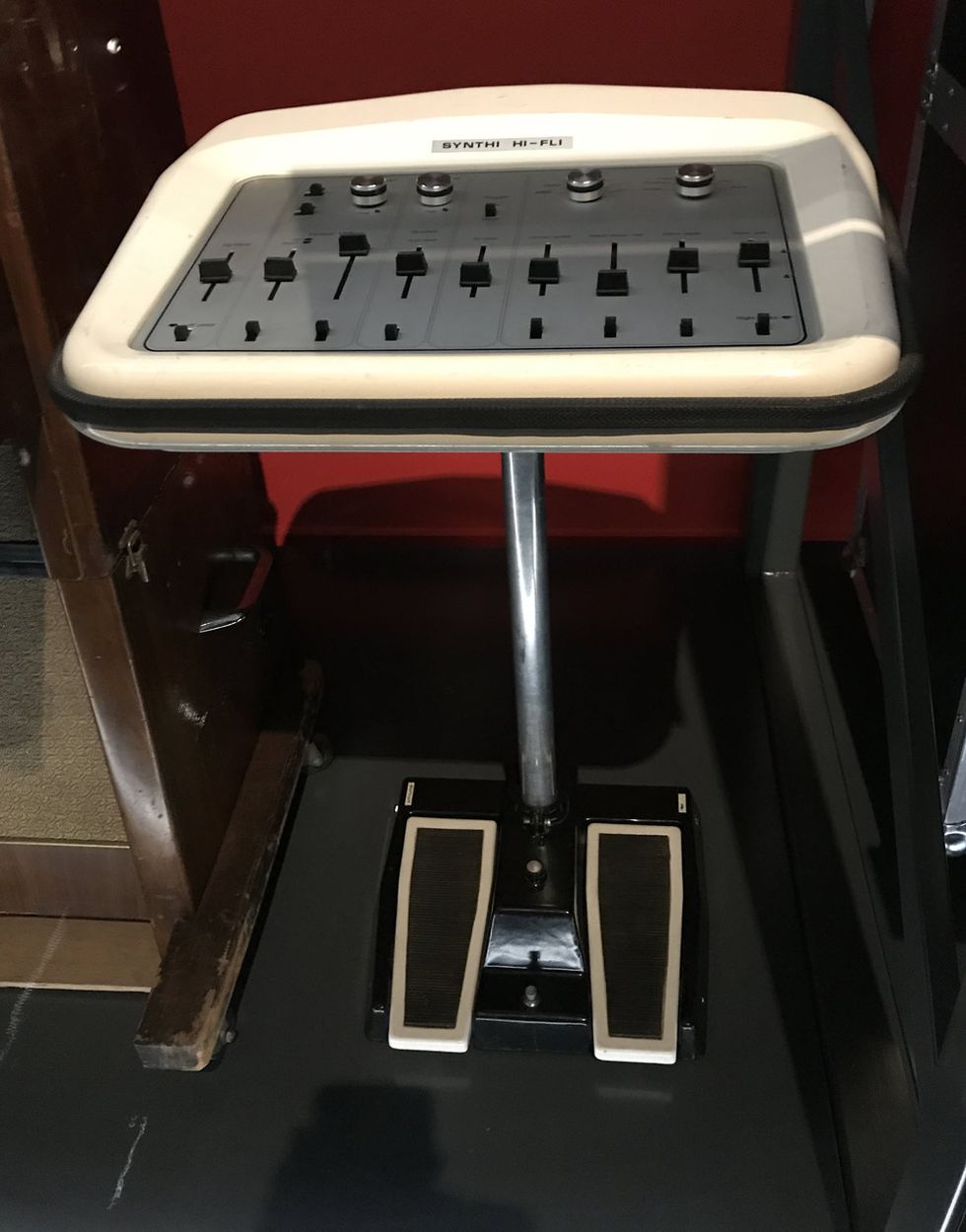
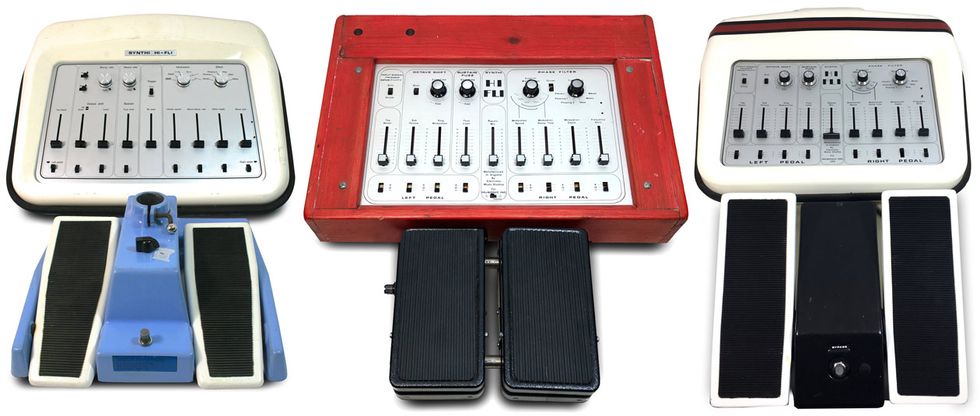
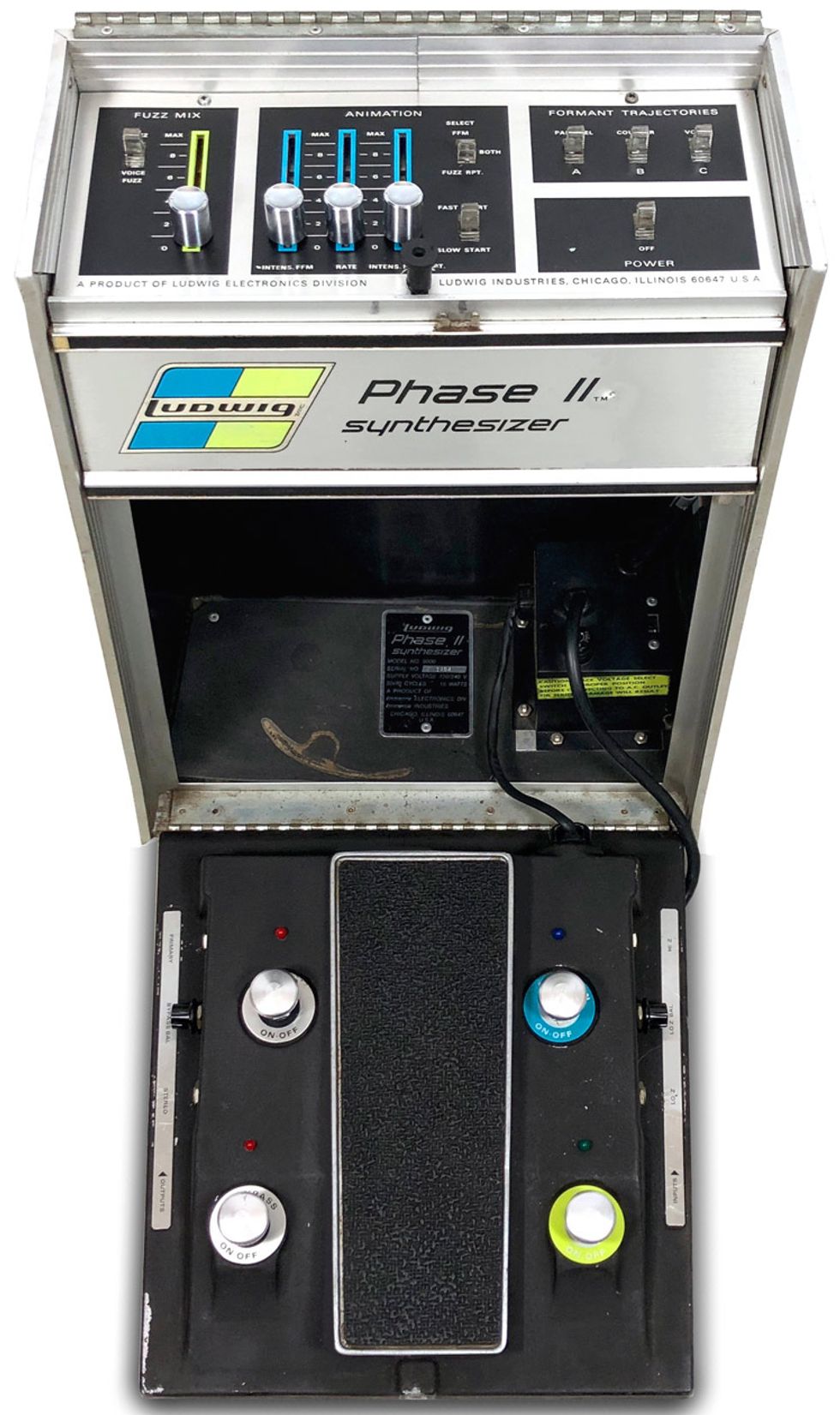
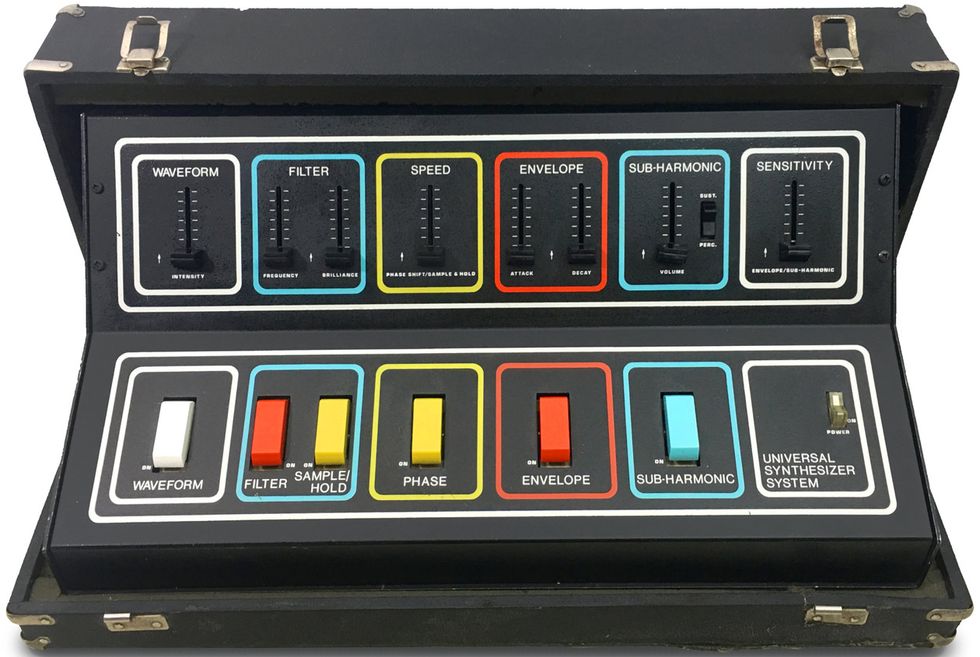
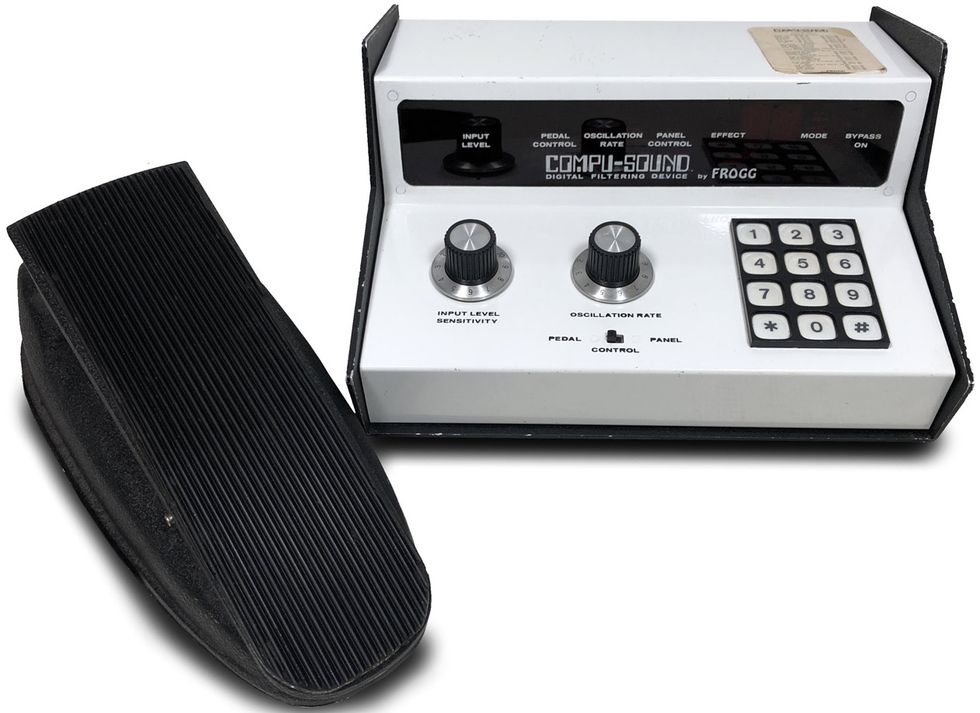
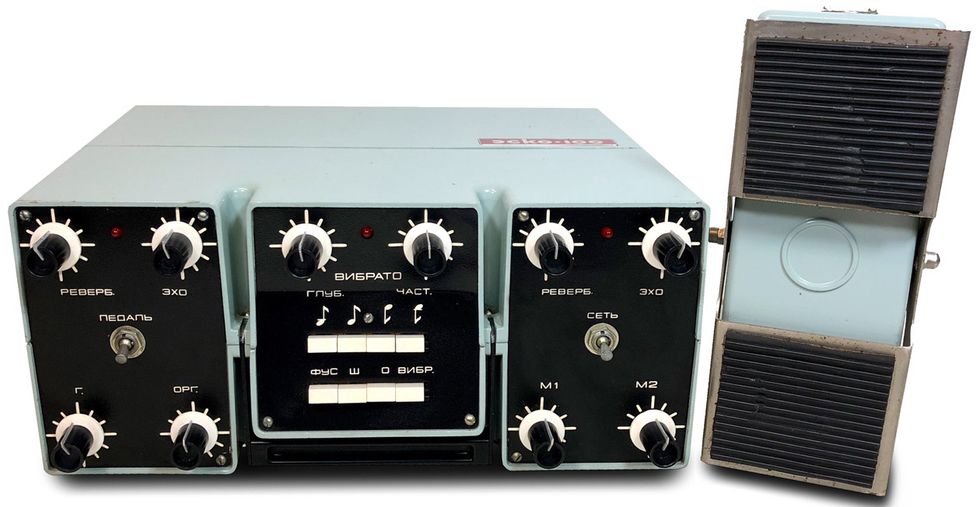
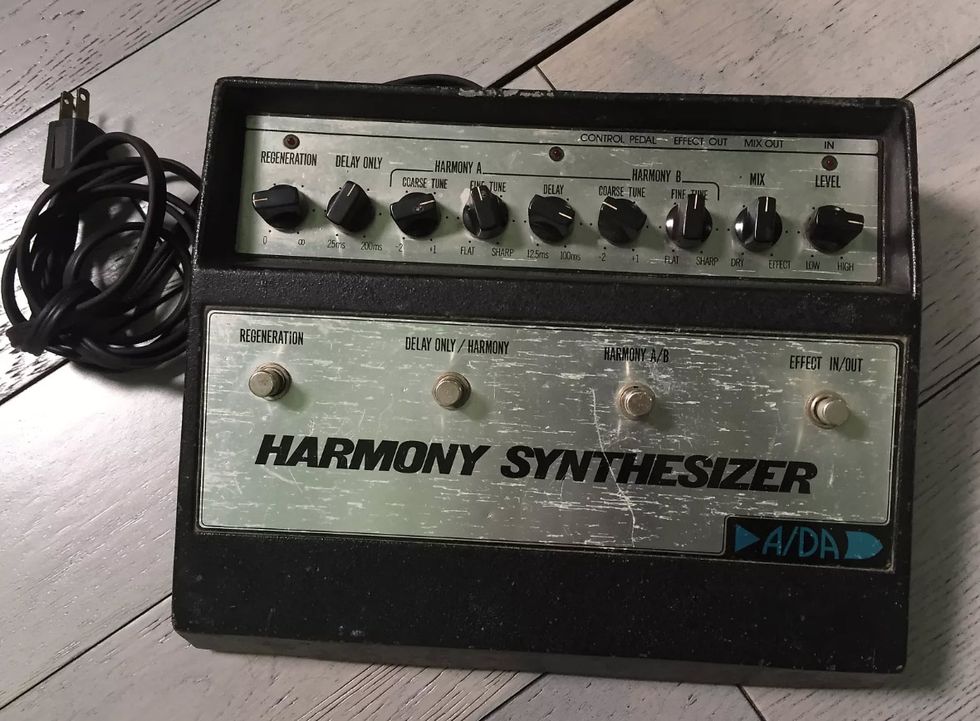




![Rig Rundown: Russian Circles’ Mike Sullivan [2025]](https://www.premierguitar.com/media-library/youtube.jpg?id=62303631&width=1245&height=700&quality=70&coordinates=0%2C0%2C0%2C0)

















